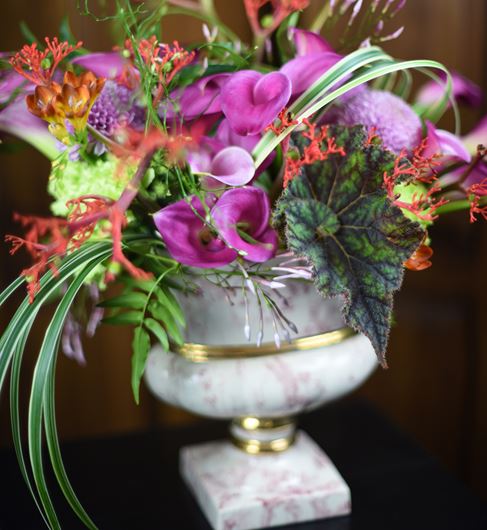Completing our 2023 lookbook series, our sixth and final trend, ATMOSPHERIC, pays homage to our planet's habitats at large. This trending macro view gathers an immersive palette of cool hues, borrowed from the oceans and forests, and pairs it with glowing bright white.
Urns and Their "Form-Meets-Function" History
While urns are a modern classic for displaying cut flowers, the simple definition is “a vase with a foot or pedestal.” What’s surprising is that research reveals that early forms of this container were defined for their utilitarian function.
Archeological finds from fifth- and sixth-century B.C. Greece uncovered urn-like artifacts that were used for holding and aging wine. Void of carved ornamentation, early renditions were made of clay and decorated with flower motifs, depictions of Greek life and mythological folklore.
Of the many shapes, three distinct categories—the calyx krater, the kylix, and the amphora—were used for specific functions. The calyx krater, with its wide neck and body, was a vertical, bowl-like container used to mix wine, while the kylix, a low, shallow bowl with a width that exceeded its height, was used for drinking wine. The third vase-like shape, the amphora, was used for wine storage.
These discoveries, made in the 14th century by Italian archeologists, inspired new versions called “campana” or bell (resembling the calyx krater) and “tazza” or cup (resembling the kylix). However, the urn's outburst in popularity came in the 15th century, when its shapes were transitioned into trendy garden containers. At this same time, it came to be used as a cut flower container as well. Vatican librarian, Giovanni Battista Ferrari, recorded the first illustrations of cut flowers placed in urns in his 1633 book titled Flora overo Cultura di Fiori.
Subsequent to the urn’s popularity in Italy, all of Europe was quick to add their own twists, showcasing three-dimensional swags, garlands, blossoms, masks and scrolls in a variety of mediums (from terra cotta to marble to metal). Distinctive styles often became associated with the locations where they first appeared. The most recognizable of the French designs, for instance, still carries the name and style found throughout the gardens of the palace at Versailles.
Today, modern versions blend historical refinement with free expression to produce limitless forms that are as magical filled with flowers today as they were when Giovanni took note in 1633.








